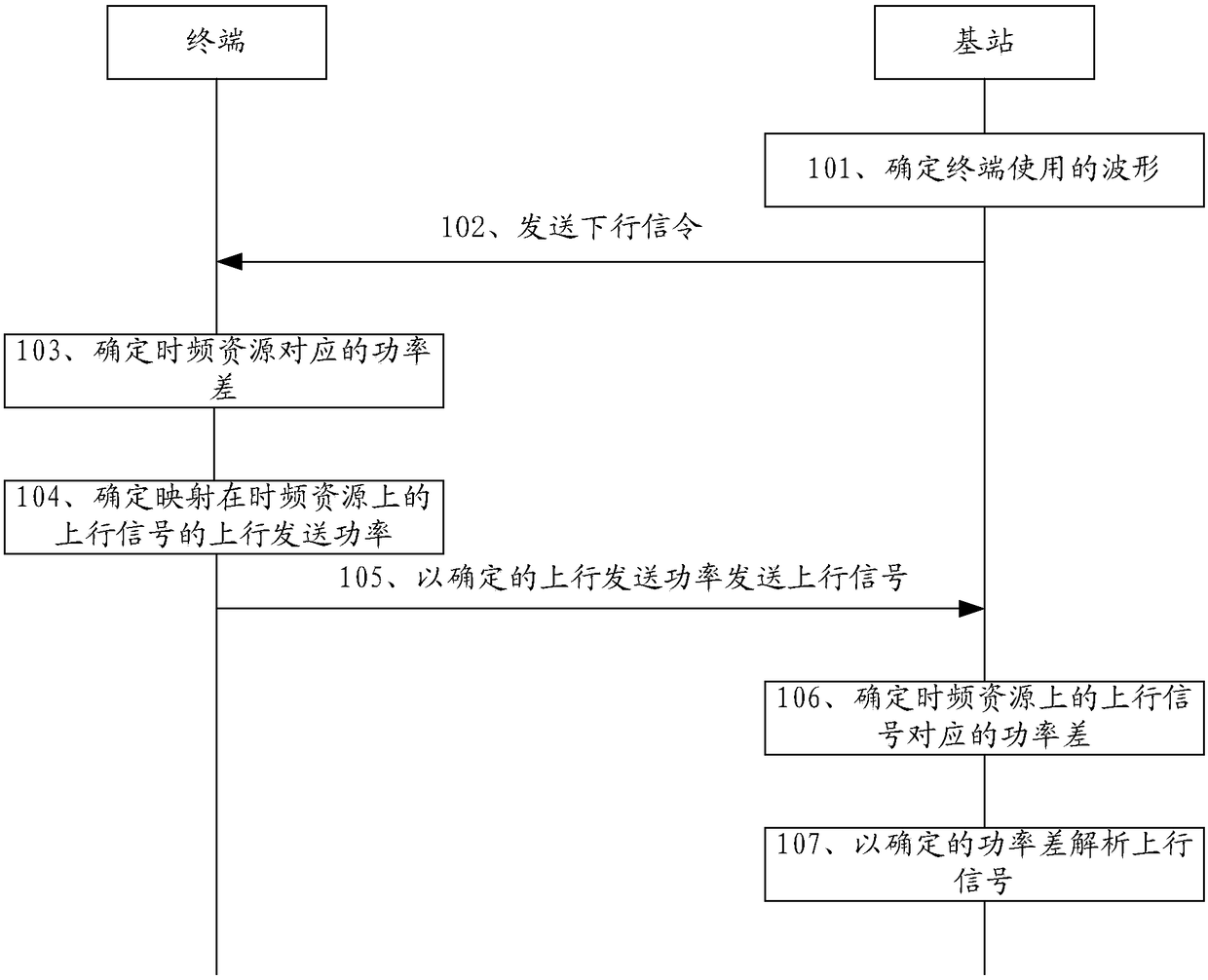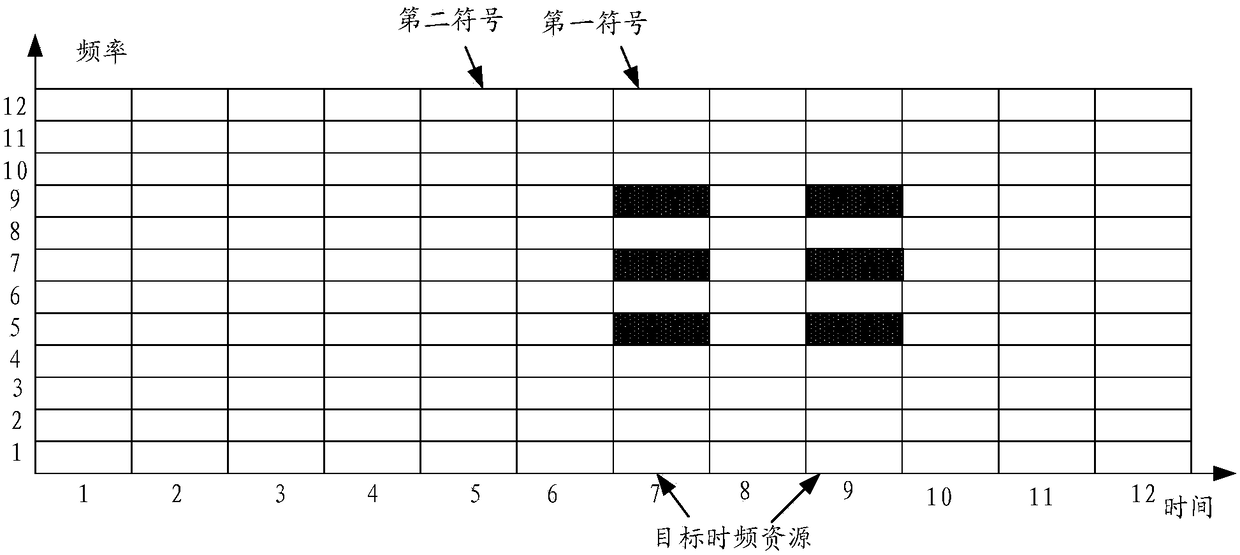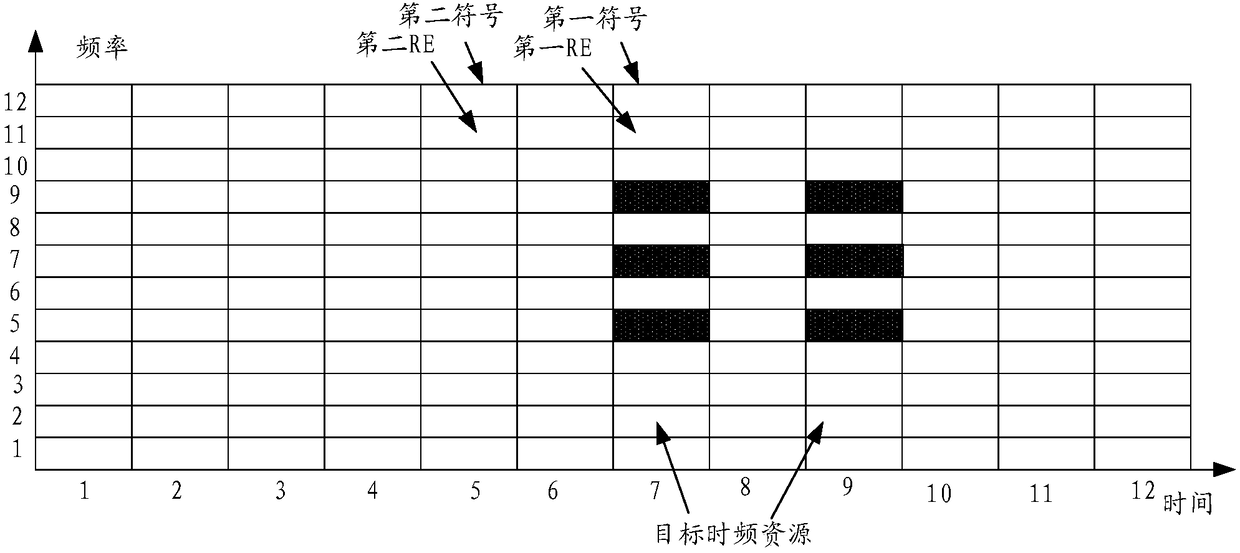Transmitting method and receiving method for uplink signal, terminal and base station
A signal and terminal technology, applied in the fields of receiving methods, terminals and base stations, and uplink signal transmission methods, can solve the problem of high PAPR
- Summary
- Abstract
- Description
- Claims
- Application Information
AI Technical Summary
Problems solved by technology
Method used
Image
Examples
Embodiment 1
[0092] Such as figure 1 As shown, the uplink signal sending and receiving method provided by the embodiment of the present invention includes:
[0093] Step 101, the base station determines the waveform used by the terminal.
[0094] Step 102, the base station sends downlink signaling corresponding to the waveform to the terminal.
[0095] Step 103, the terminal determines the power difference corresponding to the target time-frequency resource.
[0096] Step 104, the terminal determines the uplink transmit power of the uplink signal mapped on the target time-frequency resource.
[0097] Step 105, the terminal transmits the uplink signal with the determined uplink transmission power.
[0098] Step 106, the base station determines the power difference corresponding to the uplink signal on the target time-frequency resource.
[0099] Step 107, the base station analyzes the uplink signal with the determined power difference.
[0100] Specifically, in the above step 101, the ...
Embodiment approach 1
[0128] Embodiment 1. The power difference indicates the power difference between the first symbol and the second symbol
[0129] Such as figure 2 As shown, it is a schematic diagram of the target time-frequency resource provided by the embodiment of the present invention, wherein, figure 2 In , the target time-frequency resource refers to the OFDM symbol multiplexed by RS and channel, such as figure 2 As shown, both OFDM symbol 7 and OFDM symbol 9 are target time-frequency resources, wherein the RS mapped on the target time-frequency resource may be a reference signal for uplink channel sounding, for example, it may be a channel sounding reference signal (Sounding reference signal, SRS) or a reference signal for demodulation, for example, it may be a demodulation reference signal (Demodulation reference signal, DMRS), and the blank area on the target time-frequency resource is a channel for transmitting data, for example, it may be an uplink data channel ( Physical uplink...
Embodiment approach 2
[0133] Embodiment 2: The power difference indicates the power difference between the first RE in the first symbol and the second RE in the second symbol
[0134] Such as image 3 As shown, it is a schematic diagram of another target time-frequency resource provided by the embodiment of the present invention, wherein, image 3 In , the target time-frequency resource refers to the time-frequency resource of the mapped channel on the OFDM symbol multiplexed by the RS and the channel, such as image 3 As shown, the white time-frequency resources (ie, white resource elements (Resource Element, RE)) on OFDM symbol 7 and OFDM symbol 9 are target time-frequency resources.
[0135] At this time, the power difference refers to the power difference between the REs on the first symbol and the REs on the second symbol, the first symbol is an OFDM symbol multiplexed with the RS and the channel, and the second symbol is an OFDM symbol not multiplexed with the RS.
[0136] That is, in Embod...
PUM
 Login to View More
Login to View More Abstract
Description
Claims
Application Information
 Login to View More
Login to View More - R&D
- Intellectual Property
- Life Sciences
- Materials
- Tech Scout
- Unparalleled Data Quality
- Higher Quality Content
- 60% Fewer Hallucinations
Browse by: Latest US Patents, China's latest patents, Technical Efficacy Thesaurus, Application Domain, Technology Topic, Popular Technical Reports.
© 2025 PatSnap. All rights reserved.Legal|Privacy policy|Modern Slavery Act Transparency Statement|Sitemap|About US| Contact US: help@patsnap.com



